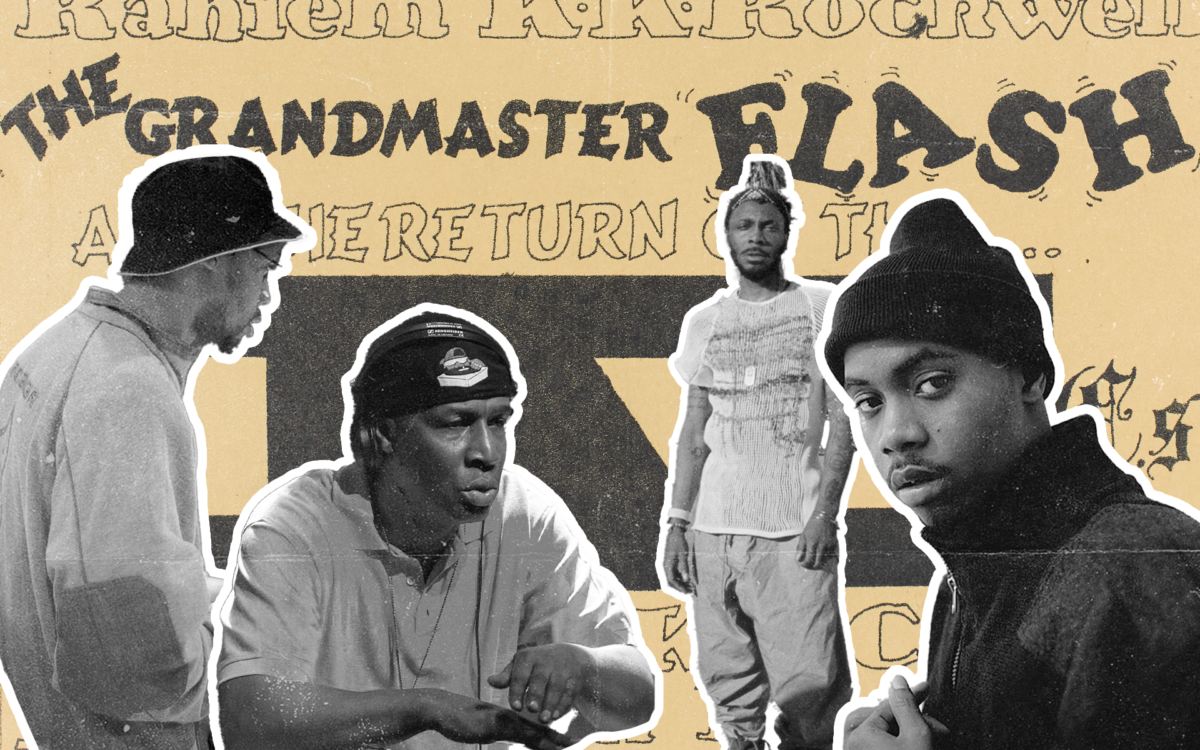Before Splice, before DAWs, and before the MPC, there were turntables, a good ear, and a remarkable sense of rhythm.
Sampling in hip hop didn’t start in a studio—it started at block parties in the Bronx. DJs like Kool Herc and Grandmaster Flash weren’t just playing records; they were looping drum breaks, using two turntables to extend the parts of funk and soul records that had the most energy for dancers.
That was the seed. The sampler hadn’t even entered the picture yet. But, the idea of repurposing sound—flipping something old into something new—was already a core element.
Take “Apache” by the Incredible Bongo Band, for example. It was originally a rock-influenced percussion jam from the ‘70s, but in the hands of hip hop DJs, it became a breakbeat anthem. Everyone from Kool Moe Dee to The Sugarhill Gang rocked over it, and it’s still a go-to for producers today, with artists like Nas and Jay-Z recently rapping over the classic.
Hear some of the songs that have sampled “Apache” via WhoSampled
If you’re looking to capture that same energy today, from bongo-fueled grooves to ride-heavy breaks, Sample Magic has you covered for channeling that classic breakbeat sound:
Download the royalty-free sample on Splice Sounds
Download the royalty-free sample on Splice Sounds
Below, we explore four key eras and their defining sample touchpoints that have shaped sampling in hip hop.
Access the world’s best sample library and connected creator tools.
The golden era: Soul, jazz, and boom bap
If the early days were about breaks and raw rhythm, the ‘90s took sampling into crate-digger heaven. Producers weren’t just looping drums anymore; they were digging deep in the crates. Soul, jazz, and obscure library records became the go-to.
The SP-1200 and the MPC2000 were the tools. The sound? Boom bap—gritty drums, chopped-up samples, and filtered basslines.
Producers like DJ Premier, Pete Rock, RZA, and Havoc turned sampling into an art form. They would chop two seconds of a jazz piano, pitch it down, and lay it over dusty drums, and boom, you had a Wu-Tang, Nas, or Mobb Deep classic.
This was also the era where the sample hunt went deep. Some of the best flips came from lesser-known records you’d only find in the $1 bin or in your parents’ basement.
Take the haunting piano riff in Herbie Hancock’s record “Jessica,” for example, which was chopped and flipped so hard it’s almost unrecognizable as the main sample in Mobb Deep’s “Shook Ones, Pt. II.” Then, Havoc layers in a random siren sound pulled from Quincy Jones’ “Kitty with the Bent Frame,” adding the perfect amount of tension. It’s a perfect example of how digging deep and recontextualizing obscure sounds can create something entirely new, raw, and iconic.
If you’re looking to channel that same crate-digger energy today, Splice has some solid tools to offer, from dreamy piano passages to flip-ready arrangements:
Download the royalty-free sample on Splice Sounds
Download the royalty-free sample on Splice Sounds
Download the royalty-free sample on Splice Sounds
The obscure sample era: Deep cuts and chop aesthetics
By the early 2000s, sampling had evolved into something way more abstract. It wasn’t just about loops and chops anymore; it was about feel, texture, and finding sounds no one else was touching. Enter J Dilla and Madlib.
They weren’t the only ones doing it, but they were definitely doing it well. Instead of pulling from obvious soul hits, these producers went deep—like Eastern European psych rock deep, or 1970s Japanese jazz fusion deep. Dilla might take a warped electric piano from an obscure jazz record, chop it up, and rearrange it into a whole new rhythm. Madlib would sample a Turkish funk record or rare rock album and loop it into something so captivating and unique that it transforms the original into an entirely new sonic experience.
Take Dilla’s work on Common’s “Dooinit,” where he completely rearranged Rick James’ well-known hit “Give It To Me Baby” into something so unrecognizable that even seasoned crate diggers were left guessing what the original sample was.
And then there’s one of the most unique examples of Dilla’s sampling genius in his flip of “Clair” by The Singers Unlimited on Slum Village’s “Players.” What’s wild is that the word “players” isn’t even in the original sample; it only sounds like that because of the way Dilla chopped, pitched, and filtered the vocal parts.
If you’re looking to explore that kind of left-field sampling vibe today, there’s gold on Splice here too, from hazy and psychadelic stacks to grainy chord progressions:
Download the royalty-free sample on Splice Sounds
Download the royalty-free sample on Splice Sounds
Download the royalty-free sample on Splice Sounds
The sample creation era: Legal shifts and the rise of royalty-free samples
By the late 2000s, the golden age of crate digging hit a wall—the sample clearance wall. Labels and estates started cracking down, and those loops from dusty dollar records could suddenly cost thousands to clear, sometimes taking 100% of all of the royalties of a song. For underground producers, that wasn’t sustainable. And for artists on the come-up? It was a straight-up roadblock.
That shift created a demand for high-quality, royalty-free samples—ones you could use with no legal drama, but still sounded great. Enter a new era of sample creation, where producers, musicians, and sound designers started building tools for other producers with all of the analog sauce, texture, and grit we used to dig for in vinyl.
Platforms like Splice changed the game here. Instead of digging through crates in a basement, you’re digging through packs from legends, niche sound designers, and musicians around the world. You still get the sound, but now with clean rights and high fidelity.
Want a dusty break or an electric piano loop that sounds like it came straight off a ’70s record? There’s a pack for that:
Download the royalty-free sample on Splice Sounds
Download the royalty-free sample on Splice Sounds
The modern era of sampling in hip hop: New tools, same spirit
Today, sampling in hip hop is more versatile than ever. With digital tools like Serato Sample, stem splitters, and AI-assisted plugins, producers can chop, isolate, and flip audio in ways crate diggers from the ‘90s couldn’t have even imagined.
But, even with all the tech, the core spirit hasn’t changed: it’s still about reimagining sound.
Artists like Alchemist keep digging for obscure loops, JPEGMAFIA blends glitchy chaos with classic flips, and Metro Boomin layers cinematic melodies with vocal chops and booming drums. Whether it’s vinyl, royalty-free Splice packs, or original recordings, today’s producers are sampling across genres, formats, and eras.
Sampling in 2025 is less about where a sound comes from, and more about what you do with it. What started as a workaround for not having instruments became the sound of hip hop, and arguably, the sound of modern music. It’s how we remember James Brown, Roy Ayers, Aretha Franklin, and Bob James. It’s how kids today discover psych rock from Turkey or Japanese city pop or gospel choirs from the ’60s.
Sampling is the heart of hip hop, and it’s not going anywhere. Whether you’re flipping dusty soul records, stretching ambient organ chords, or building your own loops from scratch, you’re contributing to a culture that’s always been about creativity, reinvention, and making something from nothing. The tools might change, but the mission stays the same: find the soul in the sound, and make it your own.
Explore royalty-free samples from leading producers, artists, and sound designers on Splice Sounds:
July 18, 2025

.svg)
.svg)




